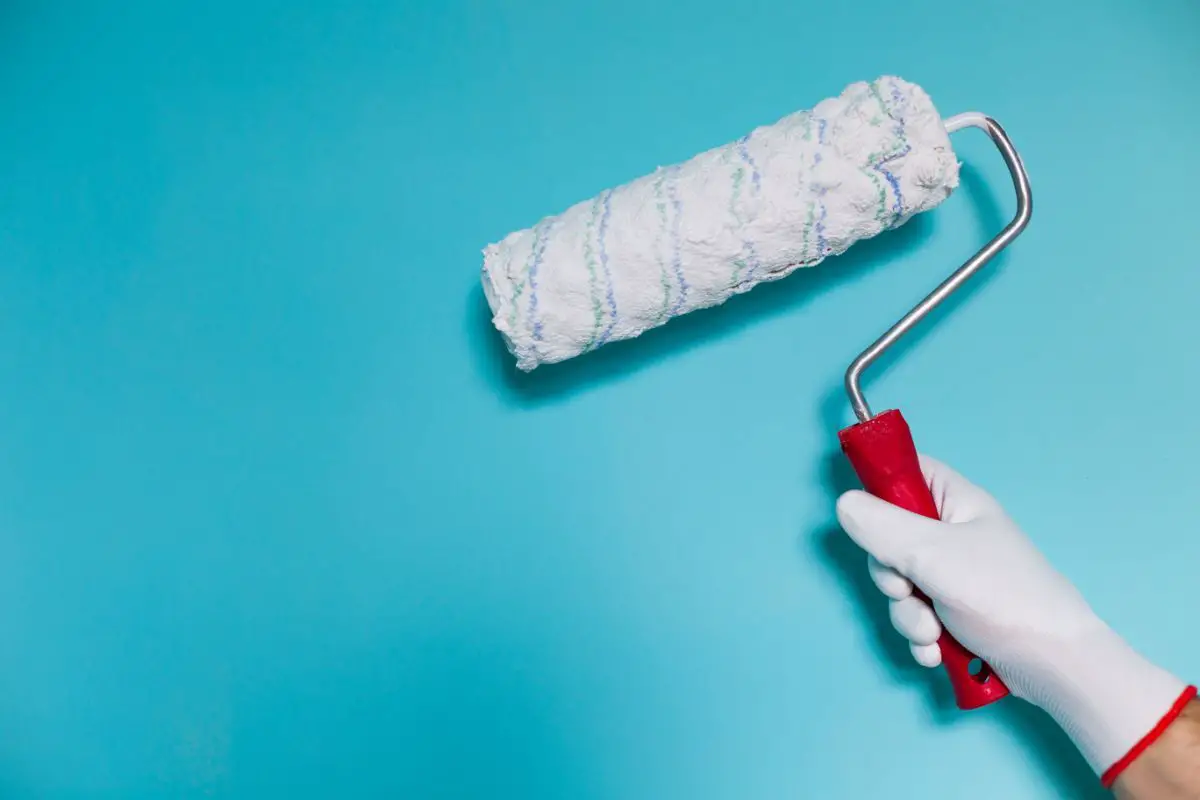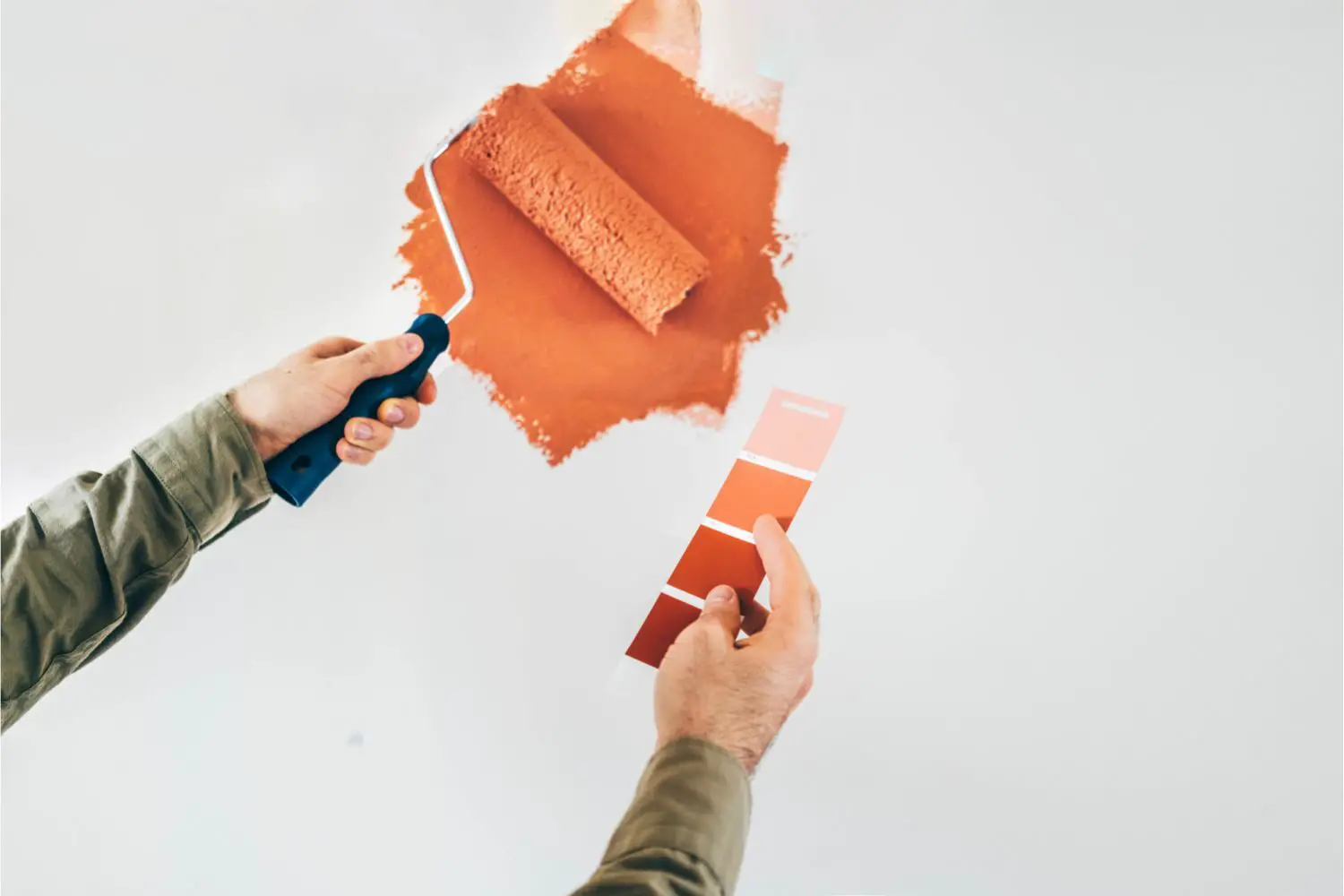Need the right paint for your project? Whether you’re working on ceilings, floors, walls, or something else, choosing the right finish is essential, and you’ll need a little knowledge to help you choose the right type.

Matte and satin are two of the most popular paint finishes, and if you’re struggling to choose one, it can be helpful to learn more about their visual and functional distinctions, and take a closer look at their pros and cons.
Ready to learn more? In this post, we’ll walk you through everything you need to know about satin and matte paint finish, so you can choose the right paint for your project. Let’s get started!
What Is Matte Finish?
Matte finish (sometimes called flat paint) has a low percentage of gloss, meaning it won’t reflect as much light as other types of paint.
If your walls have any surface blemishes or pigment, matte finish is an excellent choice, and it works well to conceal any imperfections without drawing attention to them.
Because matte paint doesn’t have a detectable sheen, it also presents a much truer color than a satin finish, and it’s not influenced by light.
Unfortunately, matte finish can be a little trickier to clean, and it may require a repaint every couple of years, so be prepared to put in a little work.
What Is Satin Finish?
Satin finish paint is a much glossier alternative to our beloved matte finish, so it’ll reflect far more light than a matte finish.
Satin finish retains its color pigments well and is durable and easier to clean than matte paint. However, matte paint offers better coverage than a satin finish.
Satin is great for interior walls and ceilings, but because it’s incredibly resilient, it can even be used on outdoor projects.
If you’re trying to find a new paint for a well-lit, high-traffic area, a satin finish tends to be the most popular choice.
The Key Differences Between Satin And Matte Finish
Although you’ll probably be tempted to prioritize color, don’t underestimate the power of your finish.
Choosing the right finish can bring your look together, and the wrong one can quickly make or break your project. Here are the key differences between satin and matte finish paint:
| Matte Finish | Satin Finish | |
|---|---|---|
| Finish | No luster | Velvet luster |
| Coverage | Excellent | Solid, may not hide all imperfections |
| Appearance | Bold color, no sheen | Strong color with limited gloss and sheen |
| Durability | More susceptible to wear and tear, will require touch-ups every few years | Better life span, more likely to hold up well against wear and tear |
| Maintenance | More susceptible to damage and harder to clean, however, touch-ups are easy and blend well | Can resist damage and is easy to clean, but touchups will be visible |
| Ease of Use | Easy to paint and touchups blend well | Can be harder to apply evenly, and touchups are usually noticeable |
| Cost | Low | Mid-High |
Where Should You Use Matte Finish?
Matte finish suits a variety of settings and can look at home in both contemporary and period properties.
Matte has a slightly chalky surface which is great for adding some subtle texture to your walls, and it tends to have a richer, darker color than a satin finish, which makes it great for statement pieces.
Matte paints are usually recommended for ceilings and low-traffic areas due to their susceptibility to wear and tear.
However, more robust paint technology has seen a rise in more durable matte paints, which makes matte a great choice for almost any room or living space.
However, any space that’s harder to reach is usually a strong choice for a matte finish.
- If you want to use matte paint in a living room or a high-traffic area, choose a version that is washable, scrubbable, and has a strong matte emulsion that’s less likely to wear and tear with time.
- Because most matte paints don’t tolerate repeated washing and scrubbing, you should avoid using them on an exterior surface.
Where Should You Use Satin Finish?
Satin finishes are much glossier than a matte finish, and they’ll be easier to clean, too.
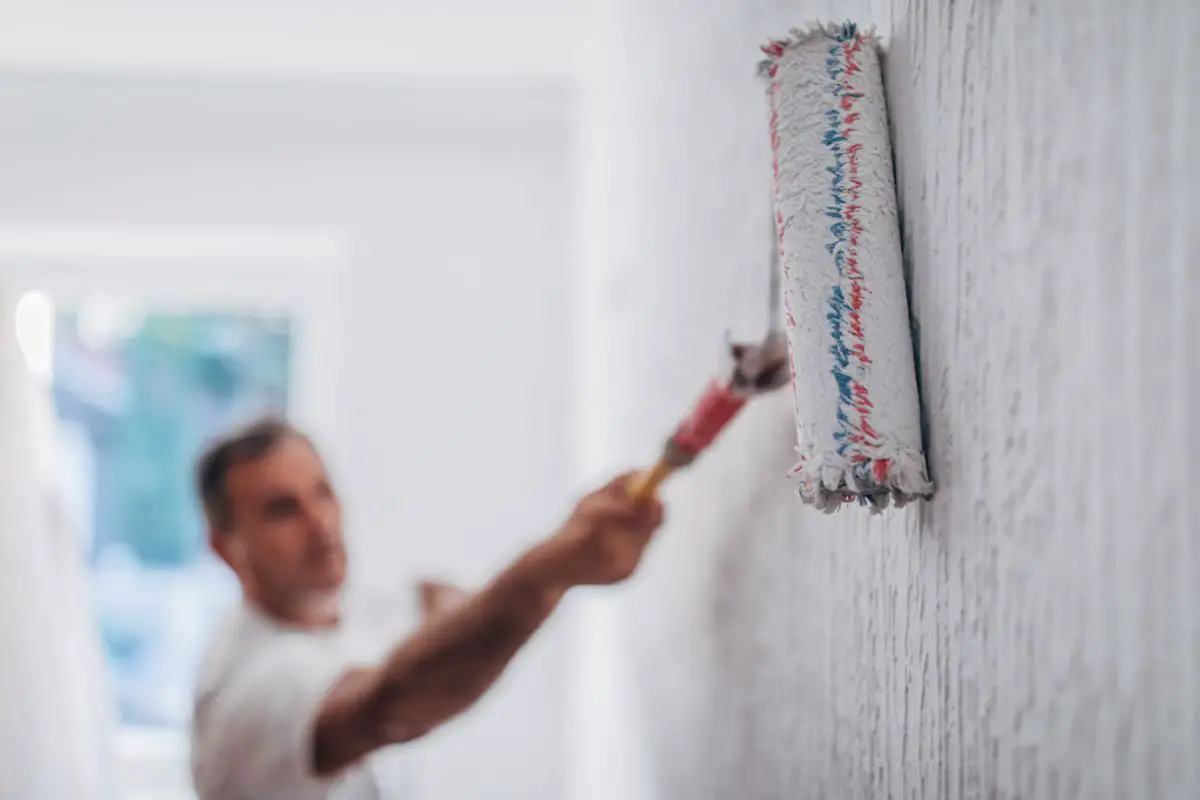
Because satin finishes usually hold up well against wear and tear, they’re a much more popular choice for high-traffic areas such as living rooms and hallways.
It’s also a great choice for kitchens, and it can be even used on doors and windows. Because a satin finish is so durable, it could even be used on external projects with minimal risk of peeling.
A satin finish holds up well against tough weather, so if you need a paint for the outdoors, you’ll be better off with a satin finish rather than a matte one.
If you’re trying to make a space look bigger, a satin finish is a great choice. Because of its glossy sheen, satin can subtly reflect light where a matte finish can’t. This can give you the illusion of space, and make light ‘bounce’ around your room.
- Satin finish is durable and long-lasting, so it will hold up better in busy areas of the home compared to a matte finish.
- You can use a satin finish on outdoor projects, and it will do a great job at resisting the weather and protecting itself against general wear and tear.
What Is ‘Sheen’?
Sheen is one of the biggest differences between matte and satin finish, but what exactly is it?
Sheen is essentially the ratio of binders to pigments in your pain. So, when the amount of binder in your paint increases, you end up with a glossier end result.
If the pigment is higher, your paint will offer less sheen. In other words, your satin finish will have more binder, but your matte finish will have higher pigment. This is what affects the final result of your paint.
Binder doesn’t just impact the appearance of your paint, it also plays an essential role in the durability and flexibility of your pain.
Higher concentrations of binder give your paint more resilience against general damage and wear and tear, and it’ll also be more water-resistant.
This means your paint can be used in busier areas and be cleaned a little more regularly to maintain its appearance.
On the other hand, more binder also means less pigment. This means the color will be slightly muted, and you may need to apply a few coats to get your desired result.
Unfortunately, though, the sheen in these paints can actually exaggerate the appearance of imperfections, and this can also make applying your paint much harder.
Compared to a matte finish, satin sits somewhere in the center of the sheen spectrum. It contains just enough binder to resist moisture and tolerate cleaning, but its sheen can present some challenges with application and touch-up.
On the other hand, matte is a cheaper option that’s better at hiding imperfections. If you’re working on a big project that needs multiple cans, matte is often the most cost-effective option, but most varieties won’t clean well.
Matte Finish: The Pros And Cons
Here’s a simple list of the pros and cons of matte finish:
Pros
- Touchups blend in well and are less noticeable than satin paint
- Cost-effective, making it great for larger projects or those on a budget
- Has a high pigment and offers excellent coverage
- Hides imperfections well
- Easy to apply and will require fewer coats to get the right color
Cons
- Can be tough to clean, and doesn’t tolerate excessive moisture well
- Most versions are not water-resistant
- Not as durable as satin and is more susceptible to wear and tear
Satin Finish: The Pros And Cons
Still trying to decide between the two? Take a look at the pros and cons of satin finish first:
Pros
- Durable and works well in high-traffic areas
- Resists moisture and can be cleaned regularly
- Provides decent coverage
- Can reflect light more than matte paint to give the illusion of light and space
Cons
- Can be difficult to apply, and does not hide imperfections well
- Touch ups can stand out prominently
- Can be more expensive than other alternatives
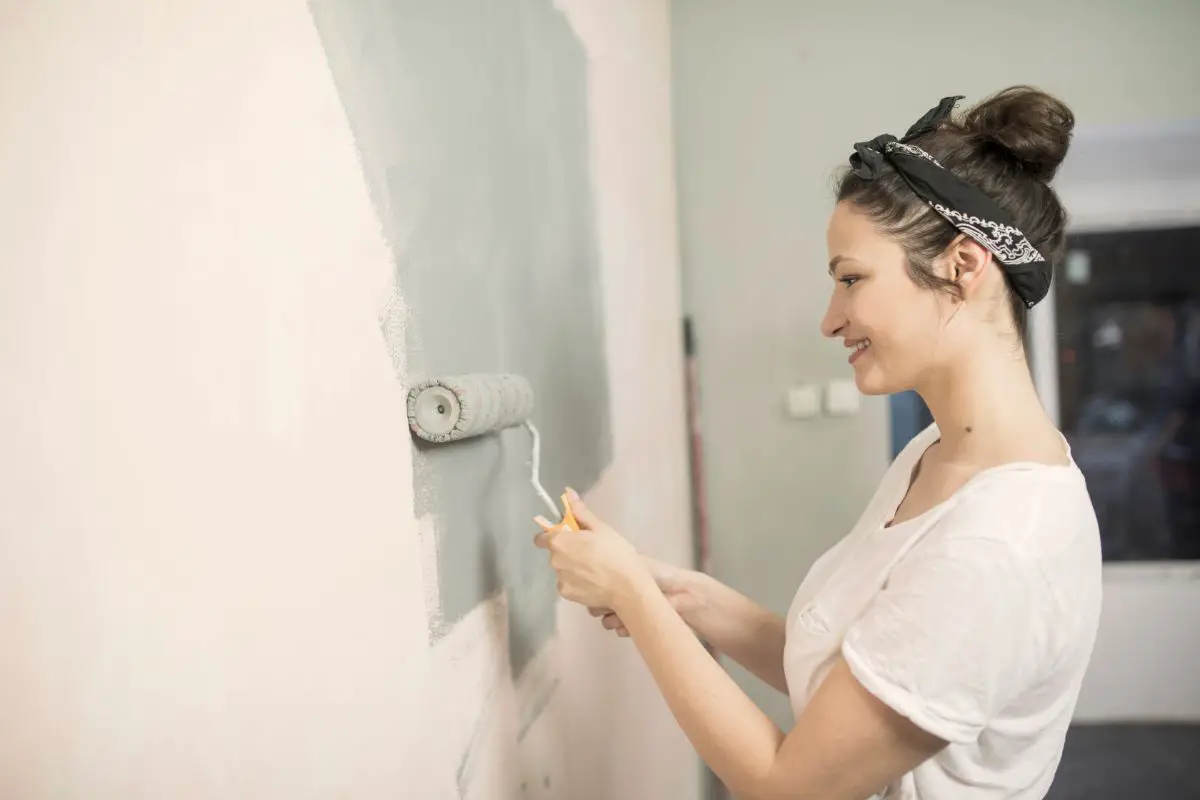
How Are Satin And Matte Different? A Deep Dive
By now, we’ve already learned a little about the different characteristics of satin and matte paint. To help you choose the right paint for your project, let’s take a much closer look at how these paints differ in specific points.
Their Appearance
As we know, one of the biggest differences between these paints is their appearance. Matte has almost no sheen, while satin is a little glossier and does a better job of reflecting light and looking a little brighter.
If your satin-painted object is sitting near a painted surface, the reflections of light may even cause it to change color.
However, matte paint is truer to its original color, and because it has almost no sheen, it won’t reflect light or be influenced by changes in light.
Unfortunately, this lack of sheen can also make matte overwhelming in some spaces, especially small areas such as bathrooms and hallways.
Their Finish
The finish is also a big difference between these two paints, and satin has a much glossier finish than matte.
Satin paint usually has a softer glow which can be described as pearly or velvet, and although it does a good job at reflecting light, it isn’t as dramatic as other paints.
However, matte has virtually no sheen, and light can’t bounce off its surface. Regardless, both paints look incredibly smooth once they’re applied, but matte paint is often easier to apply than satin paint.
Durability
When it comes to durability, there’s one clear winner: satin.
Satin contains a higher amount of binder which makes the paint tougher and allows it to hold up well against general wear and tear, which means you can clean it more frequently than matte paint.
Satin is also resistant to moisture, which means you can use it in places like bathrooms and kitchens without worrying about it being affected by mold and mildew.
Unfortunately, matte contains fewer binders which means it isn’t as durable as satin pains.
When you use matte paint, you will probably see more scratches and staining, so you’ll have to touch it up more frequently than satin paint, especially because you can’t clean it as frequently.
Frequent cleaning can expose the surface below and damage your paint.
Maintenance
When it comes to satin and matte, both paints have their own pros and cons. It’s important to take these into consideration before buying a paint. Unfortunately, matte just isn’t as durable.
Although the colors are bolder and people often prefer the look, it requires a lot more maintenance, in the long run, to keep it looking good, especially as you can’t clean it.
If you try to clean matte paint, you may end up peeling off the paint and revealing the underlying surface.
Although matte requires more work, it is far easier to touch up than satin paint, This means you may be able to repaint the area several times without being able to see your touch-ups.
This isn’t the case with a satin finish, where touch-ups are usually clearly visible.
However, satin paint IS easier to clean, which means you probably won’t need to touch it up as much.
Satin paint can be easily cleaned with just a small amount of warm soapy water and a soft rag, and unless you scrub too hard, you won’t see any changes in the paint texture.
Coverage
Another big difference between the two is coverage. Matte paint naturally contains more pigment, which means it stays truer to its color and can provide more intense coverage.
You’re also more likely to cover a surface with just one coat, whereas satin paint will often require two or three. This is great if you’re working on a budget.
Because of the binders in satin finish, you’ll get less pigment which means you may require more coats to get the right look.
However, as paint technology continues to develop, you can now buy one-coat versions in various sheens which should reduce your coverage issues.
Easy Of Use
When you’re choosing the right paint for your project, you’ll also need to consider ease of use.
Generally, matte paint tends to be easier to use than satin paint, and it’s less likely to give noticeable paint lines, even if you needed to add on another layer!
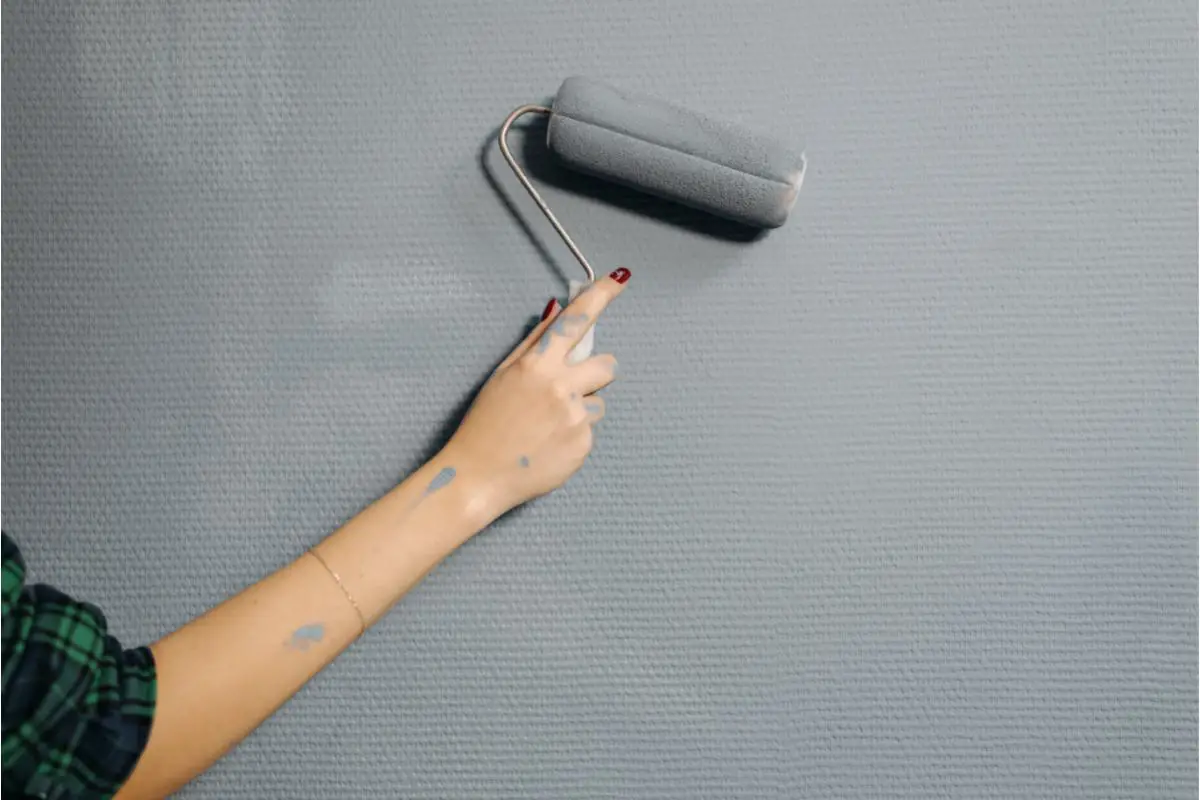
If you’re using matte paint, we’d recommend trying the W technique to cover large areas and avoid those pesky paint lines. This will work even if your paint is drying.
Unfortunately, satin paint can cause inconsistencies. You’re likely to see lines on the surface of the paint, and it can be harder to avoid these.
Most people tend to use a paint sprayer to apply their satin paint, which can offer you more even coverage with fewer lines, giving you the sheen you desire.
Satin paint is notoriously difficult to cover up. You’ll probably see lines, blurs, and smudges and touch-ups will be more difficult to blend than satin paint.
Cost
Another important factor to consider is cost. If you’re trying to save money, matte paint is the most cost-effective option. Matte provides better coverage than satin and you’re more likely to get full coverage with just one coat.
How To Apply Satin Paint
Satin paint can be tricky to apply. However, with a few tips and tricks you can make the job a little easier. As with any paint, the key to getting the right coverage is in the preparation.
Before you apply your satin paint, take time to sand and clean your surface. Sanding and cleaning your surface will remove any old paint and dirt.
Painting a clean surface will ensure the paint sticks correctly, and it will reduce the risk of any visible lumps and bumps appearing after you’re done.
If your wall has any cracks, holes, or gaps from damage or nails, we’d recommend filling them in and applying a primer first.
Ensure your primer is designed to cover the surface you’re painting and apply it in even strokes. Leave your primer to dry thoroughly before painting.
Once you’ve filled your holes and let your primer dry, you can now go in and apply your satin paint. If you’re painting a wall, we’d recommend using a zig-zag method to avoid gaps or thick sections of paint from developing.
You may need between two to three coats of satin paint to get your desired end result. Keep applying coats until you’re satisfied with the finish, and rub down after each coat has dried.
If you’re painting something a little more complex such as cabinets, we’d recommend using a small roller to speed up the process.
However, small rollers can sometimes produce a bubbly effect with your paint. If you’re happy to take a bit longer, use a small brush instead.
How To Apply Matte Paint
Matte paint is a little easier to apply than satin finish paint.
Before you get painting, start as you would with satin pain, by filling up any existing cracks and holes, and applying a suitable primer to your surface. Allow your primer to dry thoroughly before applying your paint.
Remember to clean your wall before applying your primer – this will remove dirt and debris that could stick to your wall and affect the texture of your paint.
Once you’ve filled any cracks, cleaned your wall, and applied a primer, you can start painting! Matte paint is usually applied with a roller, brush, or spray can, depending on the surface you’re painting.
We’d recommend rollers and big brushes for ceilings, and smaller brushes for walls, cabinets, and other surfaces.
Unlike satin paint, matte paint usually only needs one coat to produce the desired result. Matte paints have an incredibly intense color, so avoid applying too many coats, as this could darken your room.
Can You Use Matte Paint On Wood?
Yes, matte paint is a great choice for wood. However, if you’re going to use it to paint a piece of furniture, the end result will depend on the furniture you want to paint and how you intend to use it.
We’d advise against painting items such as dining chairs; matte paint isn’t as durable as satin, and your paint job is likely to become faded and scratched pretty fast.
If you wanted to paint a wooden table, you may also have the same issue. If you’re painting a table with matte paint, we’d recommend keeping a tablecloth or placemats on the top to avoid any scratches from external objects and keeping the table away from a wall to avoid scratching both the table and your wall.
Can You Make Matte Paint Satin?
If you’d like to turn your matte paint into a glossy, satin-finished wonder, you may be in luck. Whether your matte finish is on a wall or a piece of furniture, you can achieve this result by applying a clear satin finish coat, which will give you the glossy look you’re seeking, without altering the color of your furniture.
This usually only requires one coat of paint, and it’s a simple, cost-effective way to transform the appearance of your walls or furniture.
Remember: satin clear coats often have the same challenges as satin paint. Although you’ll need fewer coats than a satin paint, you’ll need to apply your clear coat carefully.
It can be harder to see where you’re painting with a clear coat, so you may find using a sprayer easier. This will avoid any noticeable lines or paint bubbles on your wall or furniture.
If you have a can of matte paint at the ready, and you want to increase its sheen BEFORE you start applying it to your walls or furniture, there are a few options to choose from.
You may be able to buy glass additives that can increase your sheen level, however, when you use these additives, it can be difficult to get the exact sheen you want.
Most additives can give off extreme sheens, or end up with the end result of a semi-gloss or eggshell appearance if mixed incorrectly.
As well as finding the right ratio (this is more trial and error than anything else!)You’ll also need to mix your ingredients carefully.
If you don’t mix your paint and additives thoroughly, you could end up with a VERY streaky paint, or a much thinner paint that will make it hard to achieve the coverage you want.
Can You Mix Matte And Satin Finish Paint?
Technically, yes, you can mix satin and matte paint. Mixing these two together would give you an eggshell finish, however, mixing these paints can be more difficult than you might think.
It can be hard to get the right ratio and ensure a smooth texture, which could quickly damage the object you’re painting and ruin your end result.
It’s much easier to buy the paint you want ready-mixed, as this will avoid any inconsistencies in the texture and preserve the quality of your walls or furniture.
If you want to mix the two, we’d only recommend doing so if you have a mechanical paint mixer.
Mixing your paints by hand will not give you the same result, and mechanical mixers are often the only way to guarantee consistent and even coverage.
Final Thoughts
Both satin and matte finish paints have their own sets of pros and cons, and they can’t be used interchangeably.
Satin and matte finish paints have their own unique purposes and qualities, so think about what you want to achieve (and what you’re painting) before you start buying paint, and remember: buying a ready-mixed paint is much easier than mixing them yourself, and it’s the best way to guarantee good results!
- How To Sew Fabrics Together - June 5, 2023
- How Many Stitches Per Inch? - June 5, 2023
- How Long Does It Take To Sew A Dress? - June 5, 2023







